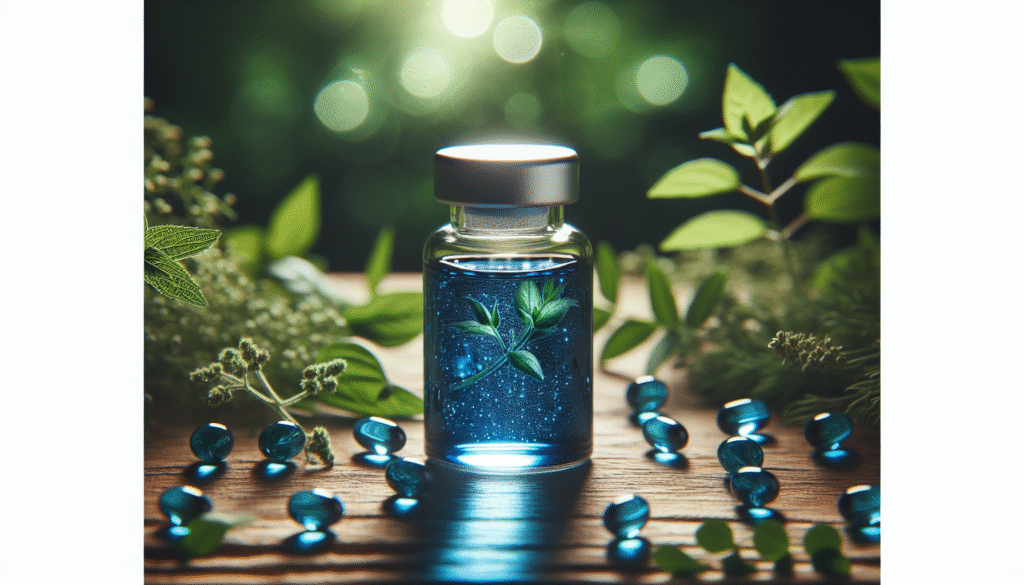
Have you ever wondered how a single compound could yield a multitude of health benefits, particularly one that has been utilized for over a century? Methylene blue, initially known for its uses in dyeing and as a biological stain, has also been found to have a range of intriguing applications in medicine. As you consider its potential, it’s essential to understand the long-term benefits that methylene blue could offer.
The Historical Context of Methylene Blue
Methylene blue has a rich history that dates back to its first synthesis in 1876. Originally developed as a textile dye, it transitioned into the medical field when researchers began to explore its potential as a treatment for various ailments. Its ability to stain biological tissues led to its use in microscopy, but its wider medical implications came to light as scientists began to investigate its pharmacological properties.
In the early 20th century, methylene blue emerged as a treatment for malaria. Its effectiveness against this disease marked the beginning of a new era in its medical applications. Over decades, research expanded, and methylene blue began to show promise in areas like cognitive enhancement, mitochondrial function, and even as an antidote for certain types of poison.
Understanding Methylene Blue
To fully appreciate the long-term benefits of methylene blue, it’s crucial to explore its chemical structure and the mechanisms by which it exerts its effects. Methylene blue is a synthetic compound with the molecular formula C16H18ClN3S. As a phenothiazine derivative, it possesses unique properties that allow it to cross cell membranes and interact with various biological components.
One of the most significant mechanisms of methylene blue is its ability to act as an electron donor and acceptor. This redox activity plays a vital role in cellular respiration and energy production, making methylene blue a compelling candidate for enhancing mitochondrial function.
Revitalizing Mitochondrial Function
Mitochondria, the powerhouses of cells, are responsible for producing energy in the form of adenosine triphosphate (ATP). Dysfunction in mitochondria can lead to a host of health issues, including neurodegenerative diseases and metabolic disorders. Methylene blue mitigates mitochondrial dysfunction by enhancing the electron transport chain, allowing for more efficient ATP production.
Numerous studies suggest that long-term use of methylene blue can improve cognitive function by bolstering mitochondrial performance. For individuals with neurodegenerative conditions, this could represent a vital step toward preserving cognitive health. Enhanced mitochondrial function could potentially delay the onset of symptoms associated with Alzheimer’s, Parkinson’s, and other related disorders.

Neuroprotective Effects
Research has indicated that methylene blue may offer neuroprotective effects beyond its role in mitochondrial optimization. Its properties as an antioxidant help to mitigate oxidative stress within the brain. This is particularly crucial given that oxidative stress is a significant contributor to neurodegeneration.
Neuroprotection occurs through a couple of mechanisms:
-
Reduction of Oxidative Stress: By scavenging free radicals, methylene blue can help maintain a balance in the cellular environment, reducing the risk of cellular damage.
-
Anti-inflammatory Properties: Chronic inflammation is a common feature in neurodegenerative diseases. Methylene blue’s ability to modulate inflammatory responses can help in protecting neural cells from damage.
Cognitive Enhancement and Memory
You may find it interesting that beyond its neurological protective qualities, methylene blue has been investigated for its potential cognitive enhancement effects. In studies involving both animals and humans, low doses of methylene blue have been shown to improve memory retention and facilitate learning processes.
The cognitive benefits arise mainly due to improved mitochondrial function, allowing for efficient energy production in neuronal cells. Increased mitochondrial activity correlates with better synaptic plasticity, which is vital for learning and memory.

Mood Regulation
In addition to cognitive improvements, the long-term use of methylene blue may also play a role in mood regulation. A balance in neurotransmitters is essential for emotional well-being, and methylene blue appears to influence serotonin levels positively.
Interestingly, research has suggested that methylene blue may inhibit monoamine oxidase (MAO), an enzyme responsible for breaking down neurotransmitters like serotonin and dopamine. By inhibiting this enzyme, methylene blue could help maintain higher levels of these crucial mood-regulating neurotransmitters.
Antimicrobial Properties
Long-term use of methylene blue extends into the realm of antimicrobial applications. Its properties make it effective against various bacteria and fungi, enhancing its role in the realm of health and medicine.
-
Bacterial Infections: Methylene blue has demonstrated effectiveness against certain bacterial infections, making it a valuable tool in combating antibiotic resistance.
-
Fungal Infections: Its antifungal properties help in treating conditions such as Candida infections, which can be particularly persistent and challenging to manage.
Potential Applications in Cancer Therapy
Another area of interest regarding methylene blue is its potential role in cancer therapy. While research is still in the early stages, certain studies suggest that methylene blue may induce apoptosis (programmed cell death) in cancer cells. This is particularly noteworthy because traditional chemotherapy often lacks specificity, damaging healthy cells alongside malignant ones.
Moreover, its capacity to enhance mitochondrial respiration could be leveraged to selectively target cancer cells. Because cancer cells typically rely on anaerobic respiration, re-introducing oxidative phosphorylation through methylene blue might compromise their survival.
Safety Profile and Dosage Considerations
You may be wondering about the safety and efficacy of long-term methylene blue usage. Generally, methylene blue has a favorable safety profile when used correctly. However, it is crucial to consult healthcare professionals before embarking on any long-term regimen involving methylene blue.
The effective dosage may vary based on the desired outcome, but studies have shown that low doses (1-10 mg per day) are typically associated with positive benefits without significant side effects. Controlled use is vital to avoid potential complications, including serotonin syndrome — a rare but serious condition that can occur when combined with certain medications.
Conclusion: The Future of Methylene Blue Research
As you consider the long-term benefits of methylene blue, reflect on its multifaceted roles across various medical applications. From enhancing mitochondrial function to providing neuroprotective benefits, its versatility is increasingly becoming apparent.
The journey of methylene blue from a simple dye to a potential therapeutic agent illustrates the complexities of medical research and the need for continued exploration. As you absorb this information, you may find yourself considering how this compound could fit into future health paradigms, especially as more clinical trials and studies are conducted.
Final Thoughts
In closing, the long-term benefits of methylene blue usage present a compelling case for further exploration in both clinical and personal health contexts. The intertwining of mitochondrial health, cognitive enhancement, mood regulation, and antimicrobial properties paints a picture of a compound that could serve as a small but mighty ally in maintaining overall health and well-being.
Your understanding of methylene blue can help bolster conversations around its therapeutic potential, paving the way for more comprehensive integration into health practices. The ongoing research is testament to the adaptability of science and the promise of rediscovering compounds like methylene blue in achieving better health outcomes.